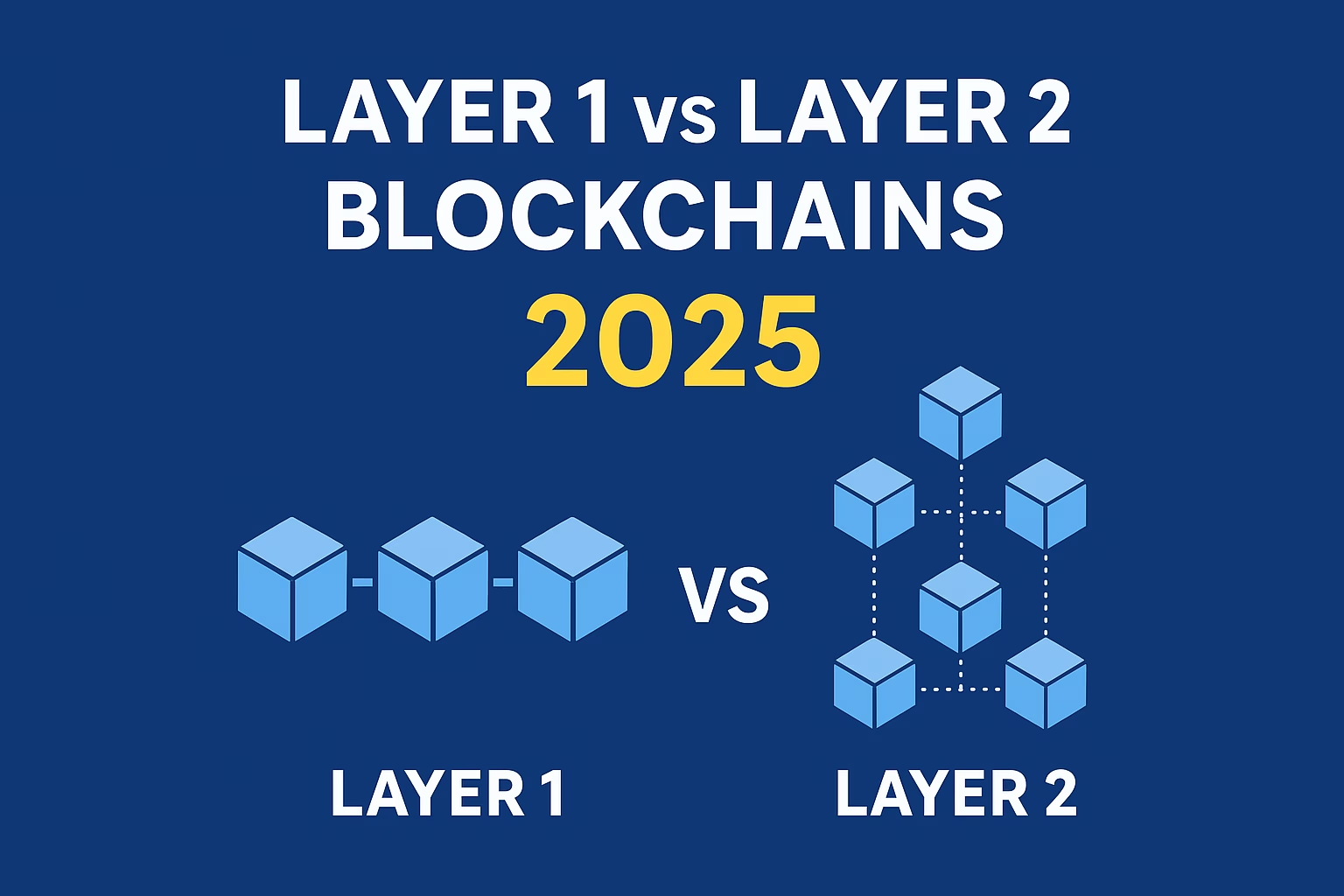
If you have been looking into blockchains technology and cryptocurrencies for the past few years, you’re probably heard the terms layer 1 and layer 2 more than once. Whether you’re an investor actually putting time into where to allocate your capital, a developer pondering where to build your next dApp, or just a mildly invested crypto nerd who wants to sound cool at the dinner party, the layer 1 vs. layer 2 discussion is relevant.
In 2025, this debate has only grown louder. Ethereum still dominates much of the developer and DeFi ecosystem, but Solana, Avalanche, and other Layer 1s are pushing boundaries. Meanwhile, Layer 2s like Arbitrum, Optimism, zkSync, and Base are scaling Ethereum in ways that seemed almost impossible just a few years ago.
So, which will you choose? Layer 1 or Layer 2? Let’s dig deeper.
A Layer 1 blockchain is the base layer, or protocol, which transaction is recorded digitally on the network. Examples of layer 1s include Bitcoin and Ethereum. All activity happens “on-chain”, with either miners or validators validating it on the blockchain, which records every transaction.
Layer 1s provide:
Examples of Layer 1s in 2025:
Again, we should think of Layer 1 as the “main highway.” Every car (transaction) goes on the same highway, and the overall network decides how to manage traffic.
A Layer 2 blockchain that sits on top of Layer 1 for the purpose to add improvements to scalability, efficiency, or cost. Instead of competing with the base layer, it extends it.
The most notable example: Ethereum Layer 2s. Gas fees on Ethereum were prohibitive to the point simple swaps were costing $100+. This gave rise to Layer 2s.
Types of Layer 2s:
Layer 2 is like adding express lanes to the main highway. Cars move faster, but still anchor their legitimacy to the main Layer 1 road.
Here’s the reality: blockchain adoption is growing beyond DeFi and NFTs. Supply chain systems, gaming, RWAs, CBDCs, and corporate sustainability credits are starting to utilize relatable public or hybrid blockchains.
This demand gives rise to the following three friction points:
That’s why the Layer 1 vs Layer 2 conversation isn’t just academic. – it outlines where businesses and developers and investors are going to build and deploy real applications.
In the 2021 bull run, when Ethereum users were paying over $200 per transaction at the height of congestion, it no longer made sense for the casual user and developers were forced to explore other networks. Some left for Solana (fast, cheap), others waited for Ethereum’s scaling roadmap to evolve.
In 2023-2024 Arbitrum and Optimism saw huge growth in TVL (total value locked with billions of liquidity in DeFi). Coinbase even launched Base, a Layer 2 chain on Ethereum, subsequently legitimizing L2s as more than experimental… they were now the default scaling strategy for Ethereum.
The real answer is not one is universally “better“, it’s about fit for purpose.
By 2025, we will predominantly see hybrid models developed:
This means you don’t really have to choose strictly one way or the other. Developers are designing and building with modularity in mind, utilizing Layer 1 security, and Layer 2 scalability.
The rise of Layer 1 vs Layer 2 blockchains isn’t a war with a clear winner. It’s more like the evolution of the internet itself. In the early days, websites had to choose between dial-up and DSL. Today, we take broadband for granted.
Similarly, in the future, users won’t ask, “Am I on L1 or L2?” They’ll just expect apps to be fast, cheap, and secure. The best builders and investors today will anticipate that reality and position themselves accordingly.
So, if you’re asking: Layer 1 or Layer 2? The smarter answer is: both — strategically, depending on your needs.
Layer 1 blockchains are base networks that processes and secures transactions directly (e.g.: Ethereum, Solana, Bitcoin). Layer 2 blockchains are scaling solutions built on top of layer 1 blockchains that improve the speed and cost of transactions, while Layer 1 still secures the transaction.
Ethereum is a layer 1 blockchain, however it has many layer 2 solutions on top of it to help with the scaling and reducing gas fees. (e.g.: Arbitrum, Optimism, zkSync)
Layer 1 blockchains often suffer from scalability issues, such as high gas fees and low throughput. Layer 2 blockchains and solutions allow for improved scalability and reduce costs for the user by processing transactions offchain or in batches.
Layer 1 blockchains are generally more secure since they validate everything on-chain. Layer 2 blockchains get their security from the layer 1 blockchain they are built on, however there can sometimes be vulnerabilities in the infrastructure and bridges around them.
Yes. Ethereum’s roadmap is heavily dependent on scaling with layer 2 rollups, ideally Ethereum will act as a settlement layer, while most user activity happens on Layer 2.
Layer 2 blockchains are much cheaper. A swap on Arbitrum might cost a few cents, and on Layer 1 Ethereum the same swap could cost a few dollars especially during peak times.
It depends on what you are trying to do. If you need max security and liquidity choose a Layer 1 like Ethereum. If you need fast, low-cost transactions – think gaming and NFTs – Layer 2 like Arbitrum or Optimism may be a better fit.
Yes. Bridges allow tokens to move between these layers. However, bridges can be risky and have been hacked. It is best to use a bridge from a third-party provider.
Some do (Arbitrum has ARB, Optimism has OP) and others (like Base from Coinbase) do not. The token model can vary depending on the governance, funding, and incentive structure.
Layer 1s (ETH, SOL, AVAX) are generally safer, more established bets. Layer 2s (ARB, OP) are newer and carry some risk, but can offer higher growth potential as Ethereum scaling becomes mainstream.